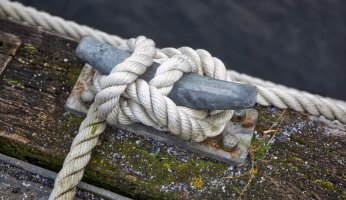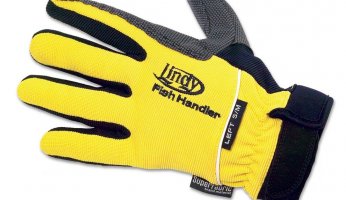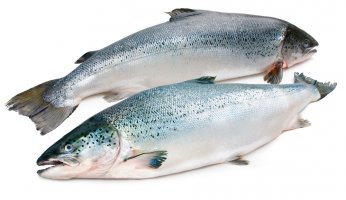Highly effective fishing in the wind tips & practices
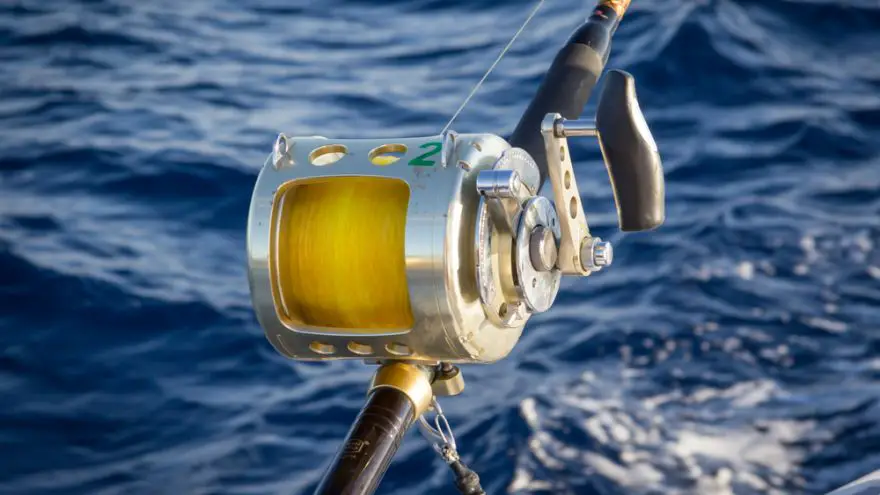 Highly effective fishing in the wind tips & practices
gearweare.net
Highly effective fishing in the wind tips & practices
gearweare.net
While all too often being criticized for being an angler’s nemesis, a wind current can become beneficial to the angler if understood correctly and used for its advantages. While topographic map and location play an additional role in the effects of wind on your fishing game, it must be understood that wind is possibly one of the most influential natural elements to impact sport fishing.
In general, wind can be credited for influencing the behaviors of fish, as it is responsible for the change in water temperature, visibility, oxygen levels, and the underwater food chain.
Game Changer

Wind is the proverbial game changer when it comes to the sport of fishing. Its influence can be felt in nearly every aspect. Generally, wind can be recognized for bringing life to an otherwise idle ecosystem.
As the winds blow above the water, the affects are felt throughout the water body by inducing currents. With the change in currents, baitfish will become active in their quest for food, as their environment is stirred up and agitated; This includes their food sources and the concentration of plankton on the downwind side of the water.
Following a long bout of calm and warm weather, a wind event will initiate the movement of the once sluggish world below the water’s top. As waters remain static, it becomes oxygen deficient. With the introduced wind movement, waters are stirred and battered against shorelines and structures, rejuvenating the oxygen present in the water. Oxygenated water sparks new life and activity among the fish.
When the wind picks up following one of these stagnant calm and warm weather spells, consider seeking out fallen timber or other structures while fishing. These “structures” act as an agitator to cause disturbance to the waves, creating an area that is conducive to activity. As the oxygen levels rise, so does the presence of baitfish and their predators.
If you are privileged to have exposure to a constant wind from one consistent direction, you can count on the larger game fish headed towards the wind-exposed shorelines, as they prepare for the influx of baitfish.
Visibility
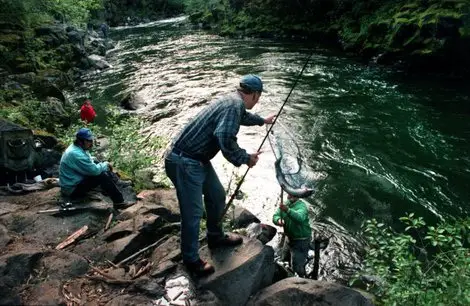
The presence of wind will also present additional advantages for the angler because of visibility changes. As the water is disturbed through waves and breaks on structures, the resulting ripples on the surface of the water makes it more difficult for the fish to see well. The agitated sediment of the floor also aids in developing low visibility set ups.
The fish are not as keen to your movement when their visibility is hampered and the likelihood of startling them is decreased. The reduction of visibility under the water also makes it difficult for the fish to properly distinguish your bait versus natural prey. Any defects in your bait presentation may very easily be overlooked.
In addition, like the advantages offered by cloud cover, wind-produced movement on the water’s top also reduces light penetration to the underwater world. This encourages activity among the aquatic insects, which subsequently produces feeding movement amongst the fish as they feed.
Presentation

As you consider your presentation skills in the wind, there are a few tips and items of consideration to ponder. A brisk wind can easily create issues in your presentation ability, so steps will be needed to resolve them as they happen.
First things first. Casting with an active wind can be difficult. It is fair to say that accuracy and distance will be sacrificed to some extent. You can minimize the effects by changing the angle of your cast, increasing the weight of your lures, or by increasing your target casting distance, so that you are casting hard enough to reach the desired location.
Once in the water, the positioning of your rod tip is important. On a day without wind, the tip of your rod gives you a good signal of activity around your bait. However, with wind, having your tip up high will only cause bows in your line. Lower the tip as much as possible to keep the line taut. If necessary, remove wind as a factor all together by placing the tip into the water, away from any wind exposure.
When using baits that work predominantly on accuracy of depth presentation and feel, such as jigs, be mindful of the bow in your line that will likely be created due to the wind. Having a bow in your line will reduce the sensitivity you need to react to a bite.
The bow in your line can also impact your retrieval. When you are working a bow out of your line, your lure may not be spending the right amount of time in the desired area. Cast with the wind, if possible, or use heavier weights, to mitigate the issue.
If you’re not casting into the wind, another option to remove the chance of a bow being produced during a cast, you can also change your approach to a sidearm cast. This will sacrifice distance, but will also minimize the time the wind can take over your line. Remember, keep you rod tip down once the line is out.
Current

A common mistake made by anglers while playing the currents created by wind is overestimating the water current. While the winds do create some current, the effects on the water current are not consistent with the actual wind speed.
As stated on bassresource.com, “Research shows that strong winds over open water flow along the surface at about two percent of wind speed. Weaker winds move water at only about one percent of wind speed. So, wind blowing at 30 mph creates a 0.5-mph current, while a wind blowing at 15 mph generates a 0.1-rnph current.”
While not present in every water body due to size and topography, any currents that are produced by the wind will set fish up in certain ways. Tips for fishing in the current can prepare you for a more successful outing if utilized correctly.
With an active current, it is likely that the fish will be turned facing into the current, which means you need to present your lure accordingly. Bringing your lure from the rear of the fish can result in a spooked fish, or simply no interest at all. Presenting it from the face of the fish will increase the likelihood of strike. So, assuming the fish are taking up a face into the current position, casting directly into the wind will bring your retrieval directly to the face, increasing the strike potential.
Line Choice
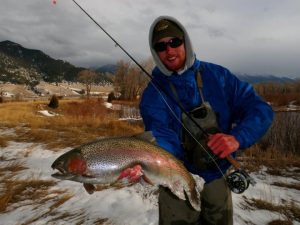
When opting for the proper line to use when fishing on a windy day, it may be easy to believe that a heavier line will perform better, as the wind would have less effect on the heavier weight. Actually, the wider, and heavier line, will actually produce more drag during the cast when going into the wind, subjecting you to a short cast.
Now, consider reducing the diameter of your fishing line. The thinner line will have less drag produced, simply “cutting” through the wind due to less surface area. Once in the water, the thinner line will have less exposure to the current that may be present, allowing you increased accuracy in presenting your lure in the desired location.
In regards to lines to avoid in windy environments, braided line is not recommended. Braided line tends to float, leaving it more susceptible to current and wind overpowering.
Bottom Fishing
If your planning on bottom fishing, wind can cause you trouble in achieving your ultimate presentation. Don’t hesitate to step up your weight one or two sizes to get your bait onto the bottom. This is critical when bottom fishing, as feeling your bait is a necessity. If you are not on the bottom, it is difficult to know what your bait is actively doing. Do not allow the wind to remove your ability to do so.
Conclusion
A windy day does not have to stop your fishing plans, especially when you are prepared for a fishing disaster. Simply learning some key tips that can make your day more successful is all it takes to make a difference. If you find yourself out on the water with the wind, you may be all alone, as others have written off the perks present when fishing in heavy wind. Take advantage of your new knowledge and put it to work and see what results you can achieve.





